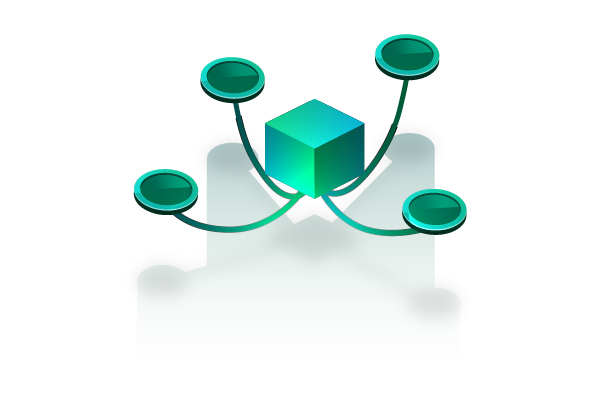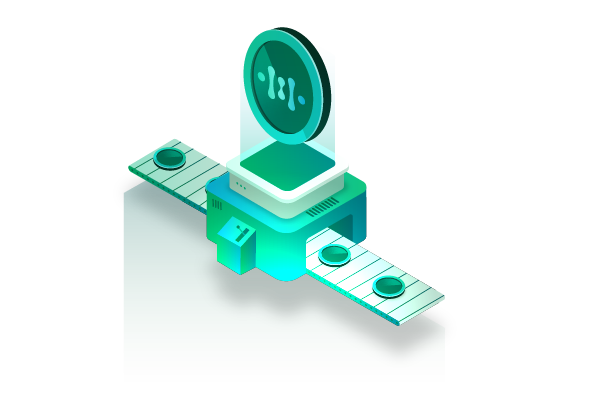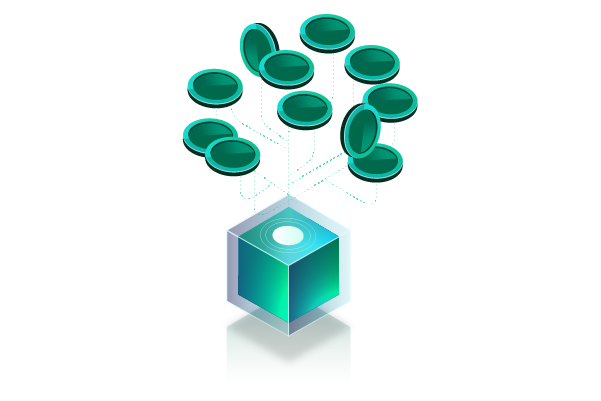Tokenization is revolutionizing how we interact with and manage real-world assets. By converting physical and intangible assets into digital tokens, we unlock numerous benefits such as liquidity, fractional ownership, and enhanced transparency. According to a recent report by Deloitte, the global market for tokenized assets is projected to reach $16 trillion by 2030, highlighting the immense potential and growing interest in this innovative approach.
Despite the vast value embedded in real-world assets, many of these assets suffer from liquidity issues. For example, real estate, which accounts for over $280 trillion in global value, remains largely illiquid, making it difficult for owners to quickly sell or leverage their properties without significant cost and time delays. Similarly, valuable assets such as art, commodities, and intellectual property are often inaccessible to average investors due to high entry barriers and complex ownership structures.
Tokenization addresses these challenges by transforming illiquid assets into liquid, tradable digital tokens. These tokens can be easily bought, sold, and traded on digital platforms, unlocking liquidity and enabling fractional ownership. This not only democratizes access to high-value assets but also reduces transaction costs and increases transparency. Through blockchain technology and smart contracts, tokenization ensures secure, transparent, and efficient management of real-world assets, paving the way for a more inclusive and dynamic financial ecosystem. But what’s the tokenization of RWA.
What is the Tokenization of Real-World Assets (RWA)?

Tokenization is the process of creating digital tokens that represent ownership or a stake in a real-world asset. These assets range from physical items like real estate and commodities to intangible assets such as intellectual property and art. Tokenization leverages blockchain technology to provide a secure, transparent, and efficient way to manage these assets.
The Benefits of Tokenizing Real-World Assets:
Liquidity
Traditional assets like real estate and art are inherently illiquid. Tokenization allows these assets to be traded on digital platforms, enhancing liquidity. For instance, a property worth $1 million can be divided into 1,000 tokens, each worth $1,000, making it easier for investors to buy and sell shares in the property.
Fractional Ownership
Tokenization enables ownership of a fraction of an asset, making high-value assets accessible to a broader audience. This democratizes investment opportunities, allowing more people to participate in markets that were previously out of reach.
Reduced Transaction Cost
Blockchain technology streamlines transactions by reducing the need for intermediaries such as brokers and lawyers. Smart contracts automatically execute transactions based on predefined conditions, minimizing the costs and time associated with traditional methods.
Transparency
The immutable nature of blockchain ensures that all transactions and ownership records are transparent and tamper-proof. This builds trust among investors and reduces the risk of fraud.
How Tokenization of Real-World Assets Works

The process of tokenization involves several key steps:
- Identification and Valuation: The asset to be tokenized is identified, and its value is assessed. This step often involves third-party appraisers to ensure accurate valuation.
- Creation of Digital Tokens: Digital tokens representing the asset are created on a blockchain platform. Each token represents a specific share of the asset.
- Smart Contracts: Smart contracts are used to automate and enforce the terms of the tokenization agreement. These contracts define the rules for transactions and ownership transfers.
- Blockchain Integration: The tokens and smart contracts are integrated into a blockchain network, ensuring security and transparency. This step involves choosing a suitable blockchain platform that supports the required features.
Platforms and Technologies Used in Tokenization
Tokenization relies heavily on blockchain technology and smart contracts. Blockchain ensures secure and transparent transactions, while smart contracts automate and enforce agreements. Platforms like Ethereum are commonly used for tokenization due to their robust smart contract capabilities. Additionally, newer blockchain platforms such as Binance Smart Chain and Polkadot offer scalable solutions for large-scale tokenization projects.
Legal and Regulatory Considerations
Tokenizing real-world assets involves navigating complex legal and regulatory landscapes. Compliance with local and international regulations is crucial to ensure the legality of tokenized assets. This includes adhering to securities laws, ensuring clear ownership rights, and complying with anti-money laundering (AML) and know-your-customer (KYC) requirements. Token issuers must work closely with legal experts to ensure their tokenization projects are compliant and to mitigate legal risks.
Challenges in Tokenizing Real-World Assets
Despite its potential, tokenization faces several challenges:
- Regulatory Challenges: Navigating varying regulations across jurisdictions can be complex and time-consuming. Different countries have different rules regarding securities, and tokenization projects must comply with all relevant laws.
- Technical Challenges: Ensuring the security and scalability of the blockchain network is essential. Blockchain platforms must handle high transaction volumes without compromising security.
- Market Acceptance: Building trust and acceptance in the market for tokenized assets requires education and robust security measures. Investors need to understand the benefits and risks associated with tokenized assets.
- Interoperability: Ensuring seamless interaction between different blockchain networks can be challenging. Tokenized assets must be easily transferable across various platforms to maximize their utility.
How Chainlink Helps in the Tokenization of RWA
Chainlink is a decentralized oracle network that plays a crucial role in the tokenization process by providing reliable, real-world data to smart contracts.
Chainlink’s Role in Providing Reliable Data
Chainlink connects smart contracts with off-chain data sources, APIs, and traditional bank payments. Its decentralized oracle network ensures that the data provided is secure and tamper-proof, which is essential for the integrity of tokenized assets. For example, Chainlink can provide real-time price feeds for assets, ensuring that token values are accurately reflected.
Smart Contracts and Automation
By enabling secure and accurate data feeds, Chainlink allows smart contracts to perform complex functions autonomously. This is particularly important in tokenization, where the terms of the asset ownership and transactions must be precisely managed and executed. Chainlink’s oracles can trigger smart contract actions based on real-world events, such as transferring ownership when a payment is received.
Case Studies of Chainlink in Action
- DeFi Applications: Chainlink is widely used in decentralized finance (DeFi) to provide price feeds and other critical data. For example, lending platforms use Chainlink oracles to determine collateral values.
- Asset Tokenization Projects: Several projects use Chainlink to ensure the reliability of data and the execution of smart contracts in the tokenization of real estate and other assets. For instance, a real estate platform might use Chainlink to verify property values and automate rental income distribution.
How HeLa Blockchain Helps in the Tokenization of RWA

HeLa Blockchain is another significant player in the tokenization ecosystem, offering unique features that enhance the tokenization process.
Advantages of Using HeLa Blockchain for RWA Tokenization
- Enhanced Security and Transparency: HeLa Blockchain’s architecture ensures high levels of security and transparency, which is crucial for maintaining trust in tokenized assets. Its consensus mechanism prevents fraud and unauthorized changes to the ledger.
- High Transaction Throughput and Scalability: HeLa’s technology supports high transaction volumes, making it suitable for large-scale tokenization projects. This ensures that the platform can handle peak loads without performance degradation.
- Interoperability: HeLa Blockchain is designed to interact seamlessly with other blockchain networks, facilitating a broader ecosystem for tokenized assets. This allows tokens to be easily transferred across different platforms, enhancing their liquidity and utility.
HeLa’s Approach to Regulatory Compliance
HeLa Blockchain emphasizes compliance with local and international regulations, providing tools and frameworks to ensure that tokenized assets meet all legal requirements. This includes robust AML and KYC measures integrated into its platform. HeLa’s compliance framework helps issuers navigate regulatory challenges and ensures that tokenized assets are legally sound.
Integration with Existing Systems
HeLa Blockchain facilitates the integration of traditional financial systems and other blockchain platforms, enabling a seamless transition to tokenized assets. This interoperability is essential for the widespread adoption of tokenized assets, as it allows traditional financial institutions to incorporate blockchain technology into their operations efficiently.
The Expanding Roles of Chainlink and HeLa Blockchain

Chainlink and HeLa Blockchain are expanding their capabilities and ecosystems to support the growing demand for tokenized assets. Their ongoing projects and future innovations will play a significant role in the mainstream adoption of tokenization. For example, Chainlink is exploring new data sources and expanding its Oracle network, while HeLa Blockchain is enhancing its compliance tools and interoperability features.
Conclusion
Tokenization of real-world assets offers transformative benefits, including enhanced liquidity, fractional ownership, and improved transparency. Chainlink and HeLa Blockchain are pivotal in this revolution, providing the necessary technology and frameworks to ensure secure and efficient tokenization. As the landscape evolves, these platforms will continue to drive innovation and facilitate the broader adoption of tokenized assets.
Disclaimer: The information provided by HeLa Labs in this article is intended for general informational purposes and does not reflect the company’s opinion. It is not intended as investment advice or recommendations. Readers are strongly advised to conduct their own thorough research and consult with a qualified financial advisor before making any financial decisions.

Yusuf Na'im Olatunde
I am a writer who has dedicated my career to exploring, explaining, and humanizing the fast-evolving world of Web3, blockchain technology, and NFTs. I entered the blockchain space driven by a deep curiosity—curiosity about how decentralized systems could shift power, reshape digital ownership, and create entirely new economic models for creators, builders, and communities. Over time, that curiosity grew into a passion, and eventually into the professional path I walk today.
As a Web3 writer, my mission is simple: to translate complexity into clarity. Blockchain can be intimidating for newcomers, yet I believe it shouldn’t be. Whether I’m breaking down the mechanics of smart contracts, reviewing emerging NFT projects, analyzing Layer-1 and Layer-2 ecosystems, or exploring new decentralized identity solutions, I aim to make every piece of content accessible, accurate, and engaging. I want my readers to walk away not just informed, but empowered to participate in the digital future.
- Yusuf Na'im Olatunde#molongui-disabled-link
- Yusuf Na'im Olatunde#molongui-disabled-link
- Yusuf Na'im Olatunde#molongui-disabled-link
- Yusuf Na'im Olatunde#molongui-disabled-link

